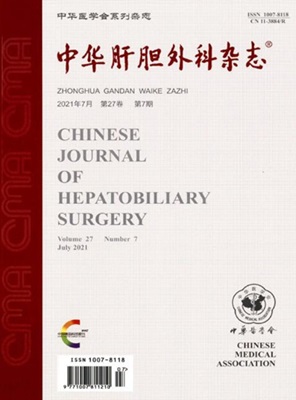Prevention of bile leakage after laparoscopic primary suturing of common bile duct by transabdominal placement of nasal bile duct
Q4 Medicine
引用次数: 0
Abstract
Objective To study the advantages of laparoscopic primary suturing of common bile duct plus transabdominal nasobiliary drainage in reducing the rate of bile leakage. Methods The clinical data of laparoscopic primary suturing of common bile duct with or without nasal bile duct drainage in Second People's Hospital of Chengdu were analyzed retrospectively. Results During laparoscopic common bile duct exploration, 286 patients were treated by primary suturing without nasobiliary drainage (group without drainage), including 32 (11.2%) patients with bile leakage; 350 patients were treated by primary suturing with transabdominal nasobiliary drainage (group with drainage), including 11 (3.1%) patients with bile leakage. The incidences of bile leakage of the two groups were significantly different (P 0.05). Conclusions The choice after laparoscopic primary suturing of common bile duct between with or without nasobiliary drainage should be determined according to the diameter of common bile duct. When a common bile duct diameter of less than 11.0 mm, nasobiliary drainage is recommended to reduce the rate of bile leakage. Key words: Choledocholithiasis; Laparoscope; Choledochoscope; Nasobiliary duct经腹置入鼻胆管预防腹腔镜胆总管一期缝合术后胆漏
目的探讨腹腔镜胆总管一期缝合加经腹鼻胆管引流术降低胆漏率的优势。方法回顾性分析成都市第二人民医院腹腔镜下一期胆总管缝合加鼻引流术和不加鼻引流术的临床资料。结果腹腔镜胆总管探查时,一期缝合无鼻胆管引流286例(无引流组),其中胆漏32例(11.2%);经腹鼻胆管引流组(引流组)一期缝合350例,其中胆漏11例(3.1%)。两组患者胆漏发生率比较,差异有统计学意义(p0.05)。结论腹腔镜胆总管一期缝合术后,应根据胆总管直径选择是否采用鼻胆管引流。当胆总管直径小于11.0 mm时,建议采用鼻胆道引流,以减少胆漏率。关键词:胆总管结石;腹腔镜;胆道镜;Nasobiliary管
本文章由计算机程序翻译,如有差异,请以英文原文为准。
求助全文
约1分钟内获得全文
求助全文
来源期刊

中华肝胆外科杂志
Medicine-Gastroenterology
CiteScore
0.20
自引率
0.00%
发文量
7101
期刊介绍:
Chinese Journal of Hepatobiliary Surgery is an academic journal organized by the Chinese Medical Association and supervised by the China Association for Science and Technology, founded in 1995. The journal has the following columns: review, hot spotlight, academic thinking, thesis, experimental research, short thesis, case report, synthesis, etc. The journal has been recognized by Beida Journal (Chinese Journal of Humanities and Social Sciences).
Chinese Journal of Hepatobiliary Surgery has been included in famous databases such as Peking University Journal (Chinese Journal of Humanities and Social Sciences), CSCD Source Journals of China Science Citation Database (with Extended Version) and so on, and it is one of the national key academic journals under the supervision of China Association for Science and Technology.
 求助内容:
求助内容: 应助结果提醒方式:
应助结果提醒方式:


